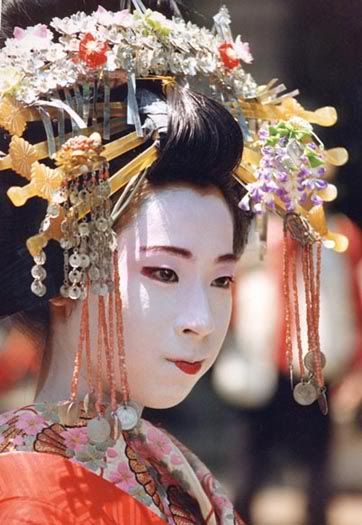
Geishas are part of the Japanese Traditional Culture as they are the ones who are "Guardians of the Japanese Culture". They live and breathe the arts and culture of Japan, even to the extent of "living in the past" where kimonos are the daily garb and traditions flourish in the mysterious and exclusive Geisha world.
They thrive in flower towns or hanamichi, the central where Geishas and Maikos learn and hone their craft. In essence they have become "live flowers" for everything about them is beautiful from their art to their elaborate clothing and make up.
Apart from the kimono and the make up, the Maikos wear kanzashi pins on their hair. They are the pretty pins in their hair that make them appear more flower like.
Kanzashi used to be sticks of rods worn in hair during the Jomon Period, believed that it would ward off evil spirits. It was in the Heian Period where they were worn as hair ornaments, as it was more common to wear one's hair down as opposed to having it tightly bunned at the time. Later on the practice of wearing the pins and combs died due to the flurry of Western hairstyles that were favored by the women at the time. Nowadays there is a revival of the kanzashi in everyday and formal occasions. Of course they are more commonly seen on Shinto brides, tea ceremonies, ikebana and geishas and maikos.
There are many varieties and many styles of wearing them. The way in which a geisha wears her kanzashi indicates her status depending on the type and location of the kanzashi. Maiko usually wear more numerous and elaborate kanzashi than older geisha and progress through several hairstyles where the kanzashi must be worn in a fixed pattern.
There are two types of kanzashi : the Basic Kanzashi and the Hana Kanzashi.
Basic Kanzashi is usually composed of gold, silver, laquered wood, silk and more recently, plastic.
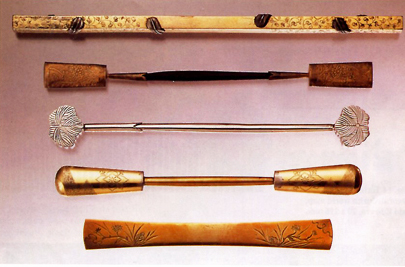
Hana Kanzashi are the more elaborate hair ornaments more commonly worn by maikos and geishas. They are in the shape of silk flowers as the word hana means "flower". They are the ornaments that cascade down their hair and frame their faces. Geisha wear different hana kanzashi according to the month, or public holiday. In the summer months (June to September), jade ornaments with white or silver themes are worn. During the winter months (October to May), tortoiseshell and coral kanzashi are worn.
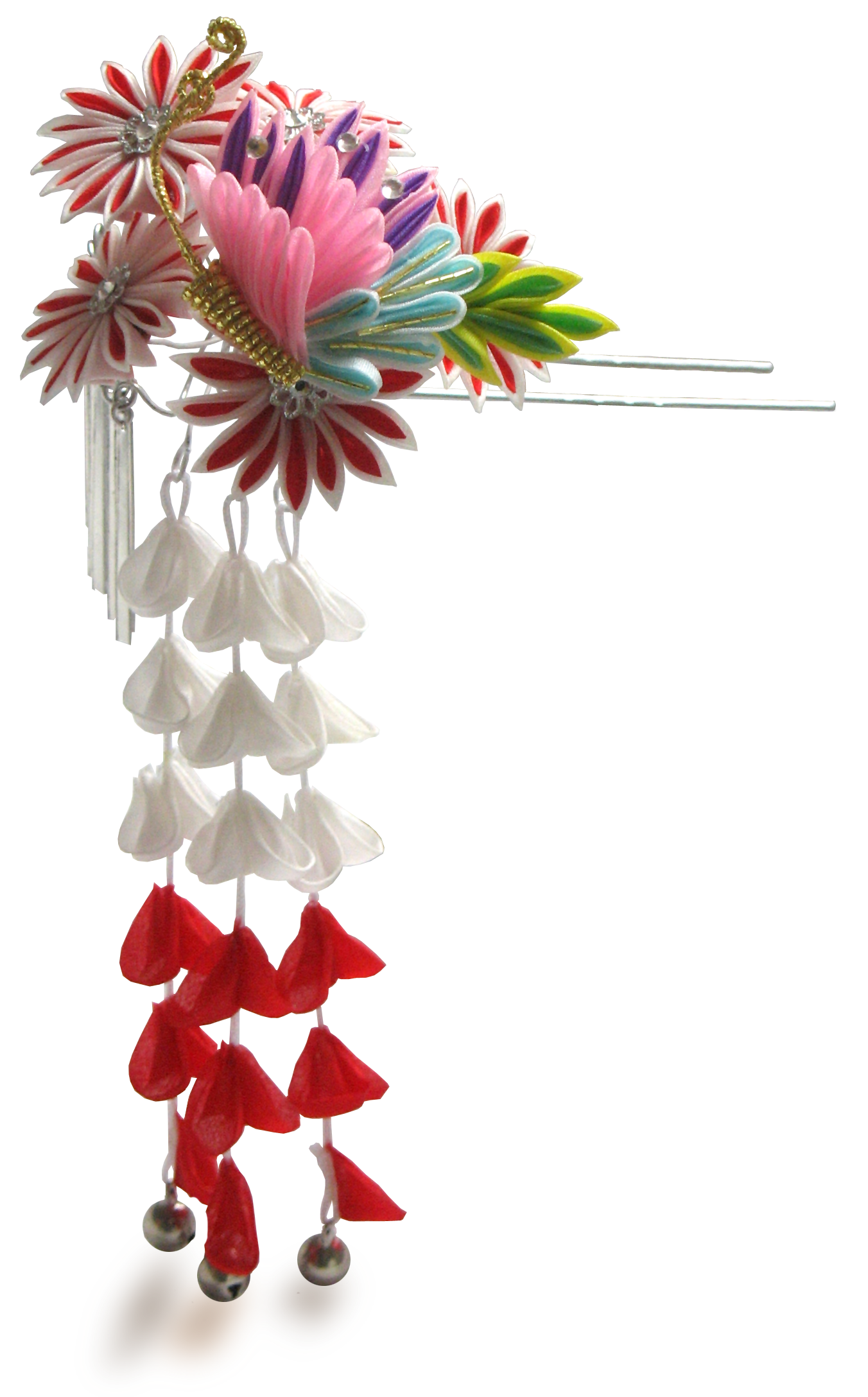

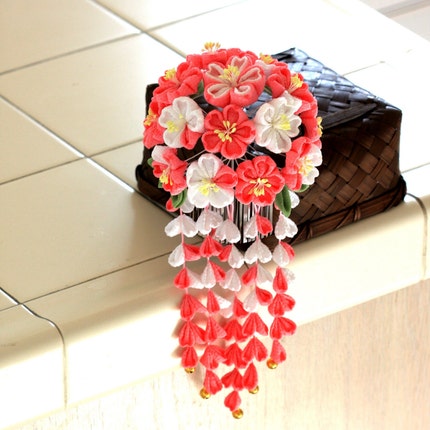
Seasonal Kanzashi where the seasons dictate which kind of hair ornament is worn in Japan. This is more noticeable on the geisha and maiko since they are the ones who often wear kanzashi for it to be noticeable. Since maiko wear more kanzashi than senior geisha, seasonal changes are even more important for them.
January - The design differs each year. Shouchikubai is a popular choice, a combination of pine (matsu), bamboo (take) and ume plum blossoms, (green, red and white) which are usually associated with celebrations.

February - Usually trailing deep pink, or sometimes red ume plum blossoms, which are to be seen everywhere in Japan at this time and symbolize young love and the approach of spring. Another less common theme is the pinwheel.

March - Trailing yellow and white rape blossoms (nanohana) and butterflies, as well as peach blossoms (momo), narcissi (suisen), and peonies (botan).

April - Trailing soft pink cherry blossom (sakura) mixed with butterflies and bonbori lanterns, signaling the approach of summer. Cherry blossom viewing at this time of year is a major cultural event in Japan. Also, kanzashi consisting of a single silver (or sometimes gold) butterfly (cho) made of mizuhiki cord are common.

May - Trailing purple wisteria (fuji) and flag irises (ayame), usually of the blue variety. Irises denote the height of spring. Small silver butterflies also pop up as extra decorations in May.

June - Trailing green willow (yanagi) leaves with pinks, or less commonly hydrangea (ajisai) flowers. Willow is a traditional image associated with geisha. This month is the rainy season in Japan, and therefore willow (a water-loving tree) and the washy blue of hydrangea are appropriate.

July - Kanzashi featuring a display of fans. These will usually be of the round uchiwa variety, but occasionally folding dancing fans are also featured. The fans refer to the Gion Festival which takes place at this time, a huge event held at the Gion geisha district in Kyoto, which involves hundreds of traditional dances by geisha. Fans are a staple component of traditional Japanese dance. The fans featured in a maiko's July kanzashi vary each year, in line with the Festival. There are common themes such as dragonflies and lines denoting swirling water. Other kanzashi worn during July are the fireworks kanzashi and tsuyushiba (dewdrops on grass).
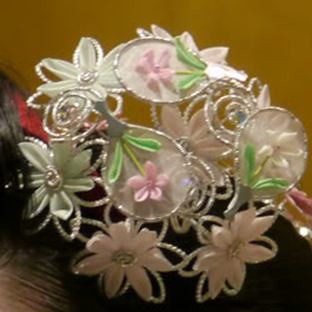
August - Purple morning glory (asagao) or susuki grass. The susuki grass appears as a starburst of spines. Senior maiko wear silver-white and junior maiko wear pink or red.

September - Japanese bellflower (kikyo). The purple tones are traditionally associated with autumn. Often these will be mixed with the other autumn flowers: bush clover, patrinia, chrysanthemum, Japanese boneset, kudzu, and pinks.

October - Chrysanthemum (kiku). These are well-loved in Japan, and are a symbol of the Imperial Family. Usually the chrysanthemums featured are red and white, a combination which signals the height of autumn.

November - Trailing autumnal leaves. These may be a generic yellow leaf or the characteristic red maple leaf. Maple viewing is the autumnal equivalent in Japan of cherry blossom viewing. Ginkgo and liquidambar leaves are also employed.

December - The Japanese make mochi at this time of year, and often decorate trees with them to represent white flowers. It is thought to be good luck to wear kanzashi featuring mochibana, or rice-cake flowers. December kanzashi also feature two maneki, which are tiny blank tags. Traditionally maiko visit the Minamiza Theatre and ask two of their favourite Kabuki actors to autograph them with their Kabuki nom de plume. Some December kanzashi also include bamboo leaves.
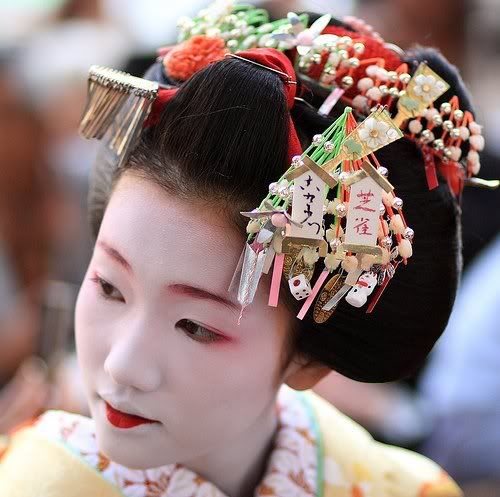
New Year - At this time of year all maiko and geisha wear unhusked rice ears on the right side of their coiffure. These kanzashi also feature eyeless white doves. The maiko and geisha fill in one eye and ask somebody they like to draw the other.
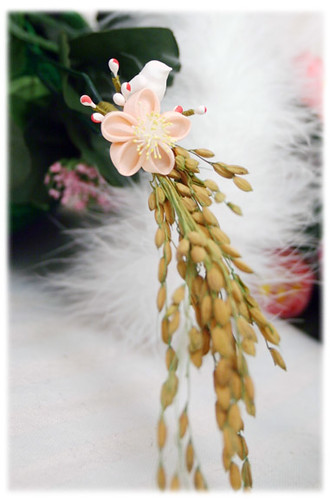
Here are some images showing how the kanzashi is worn.










---
~ Krisan
Note: The images do not belong to me and belong to their respective owners. The information of the seasonal kanzashi is taken from wikipedia.
~ Krisan
Note: The images do not belong to me and belong to their respective owners. The information of the seasonal kanzashi is taken from wikipedia.
Post Title
→Costume II Silk Flowers in Her Hair
Post URL
→http://emohairstylesforgirls2011.blogspot.com/2011/04/costume-ii-silk-flowers-in-her-hair.html
Visit Emo Hair Styles For Girls for Daily Updated Wedding Dresses Collection
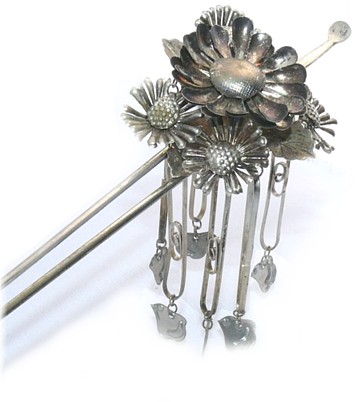

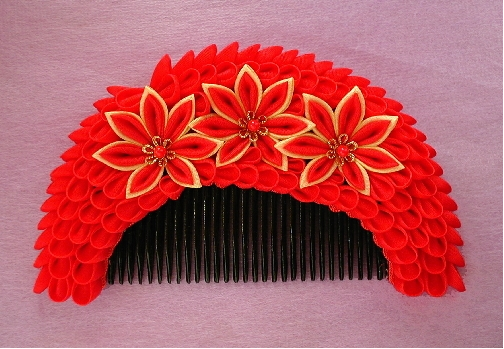







No comments:
Post a Comment